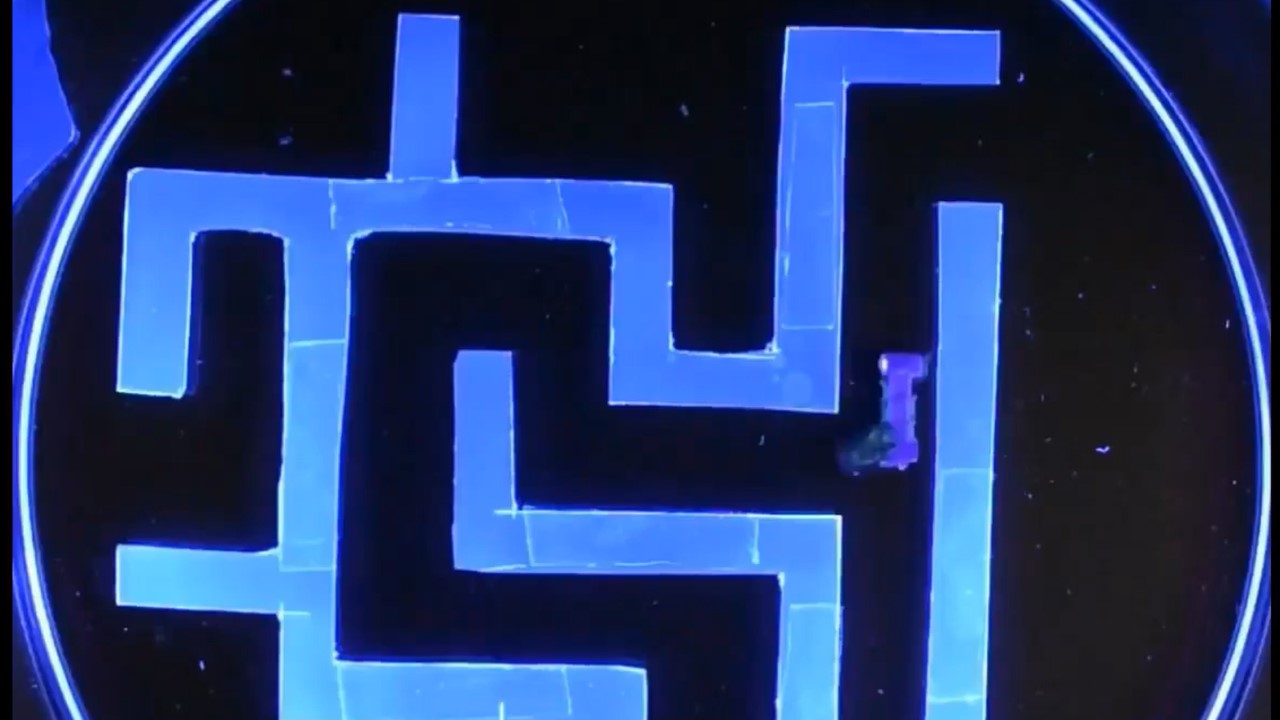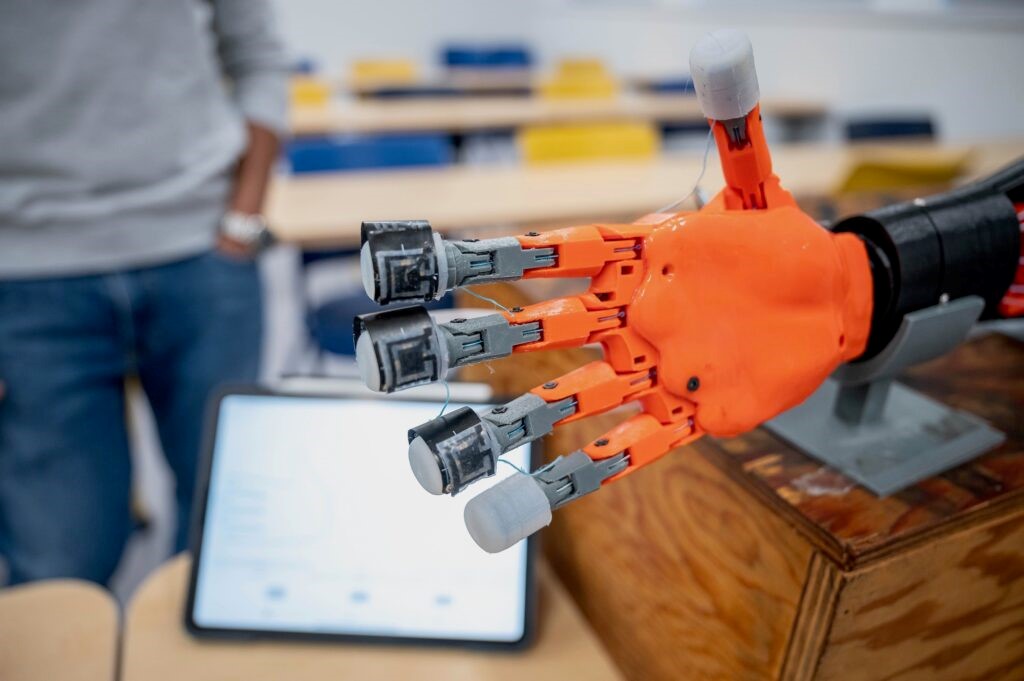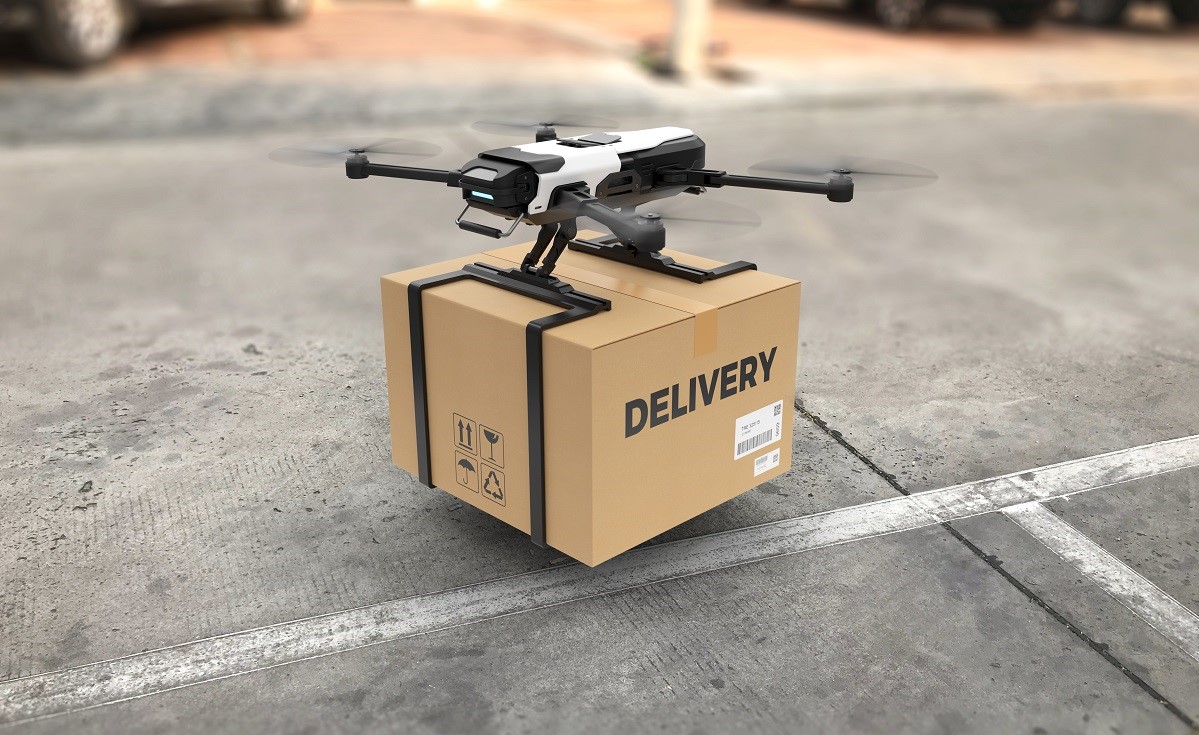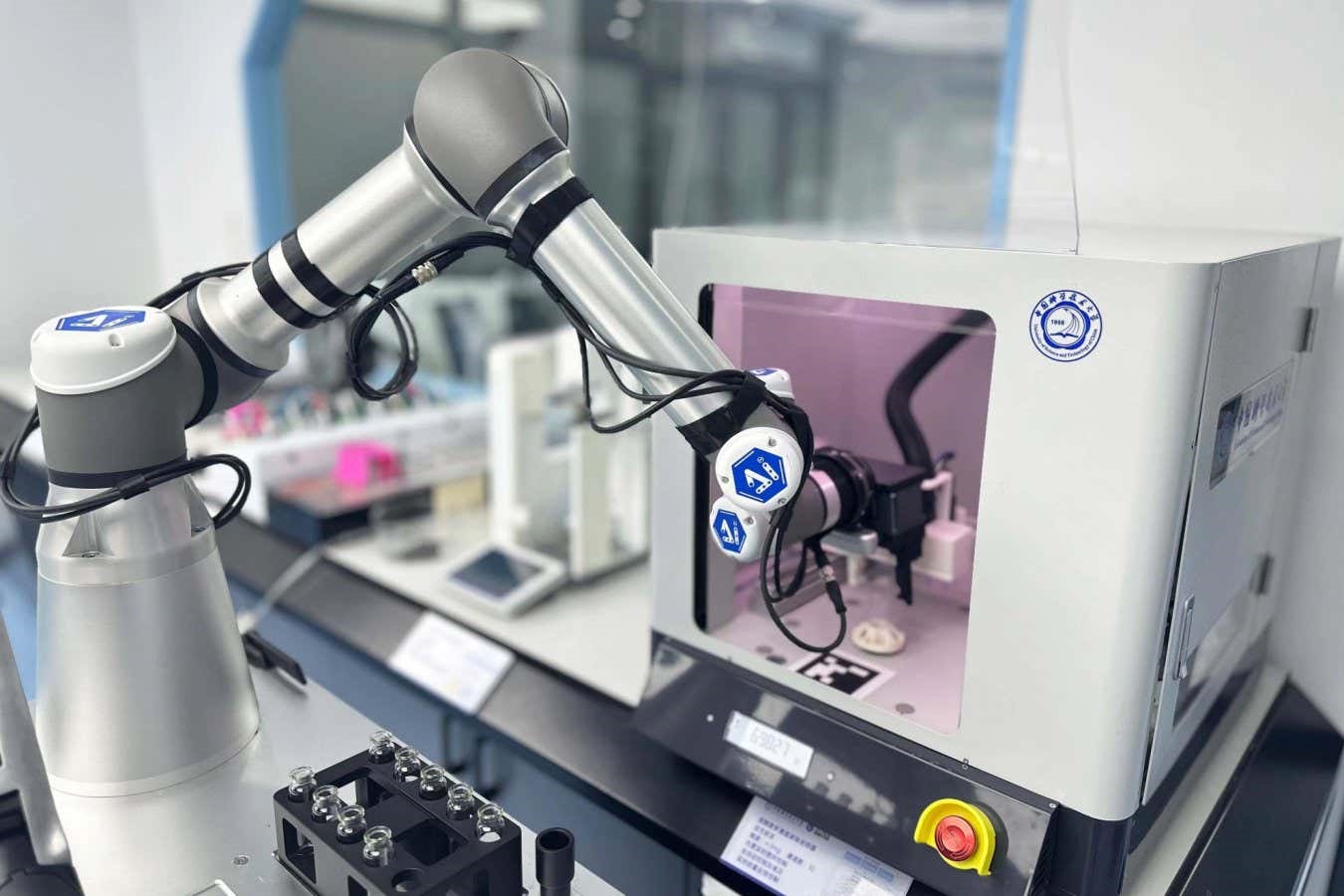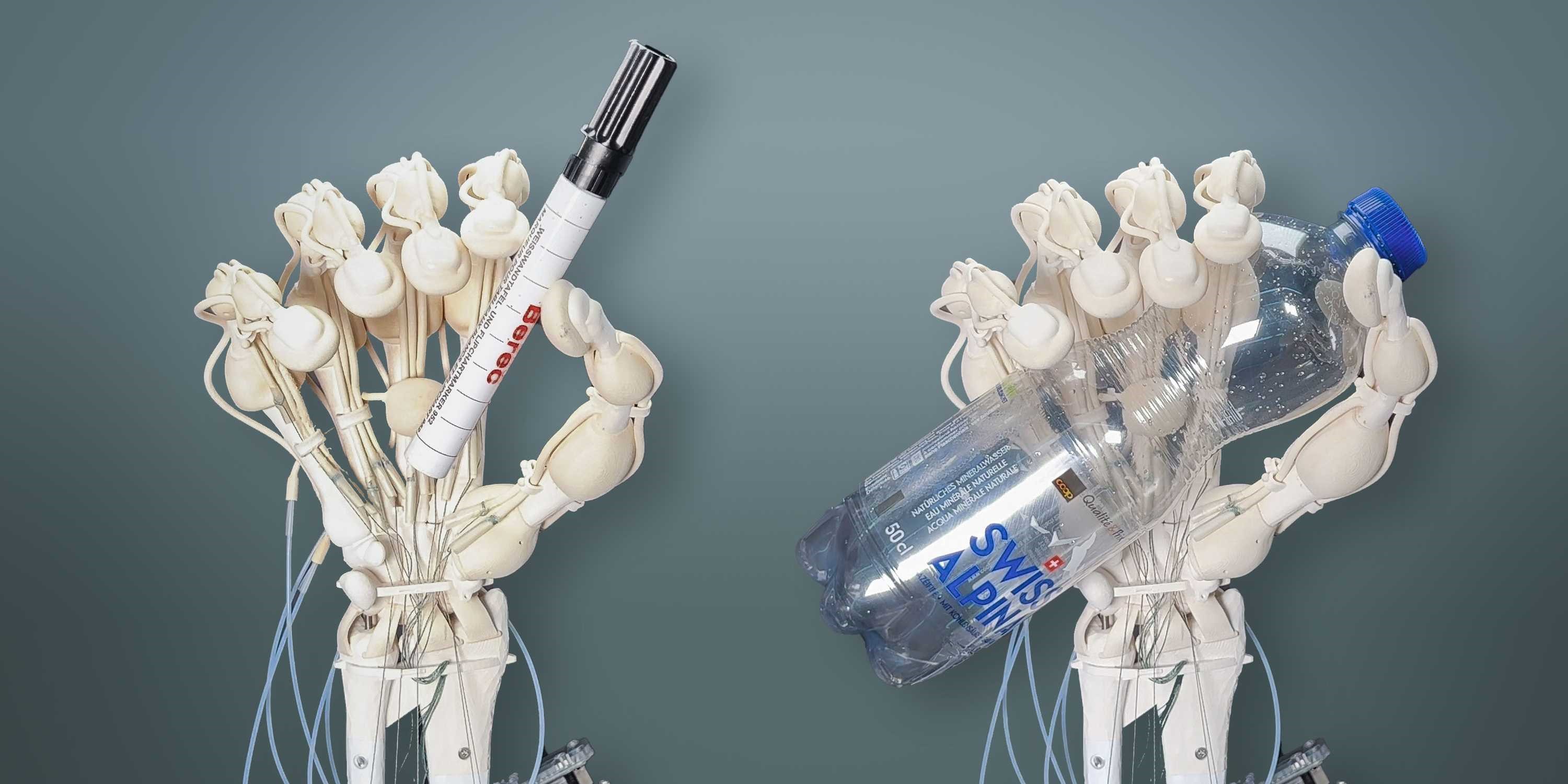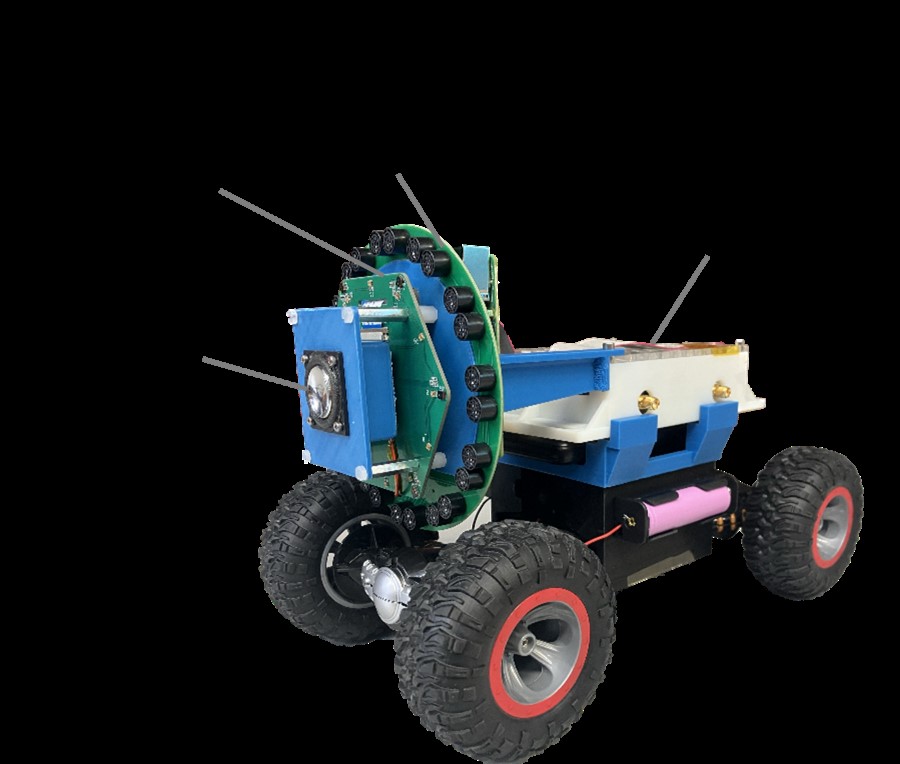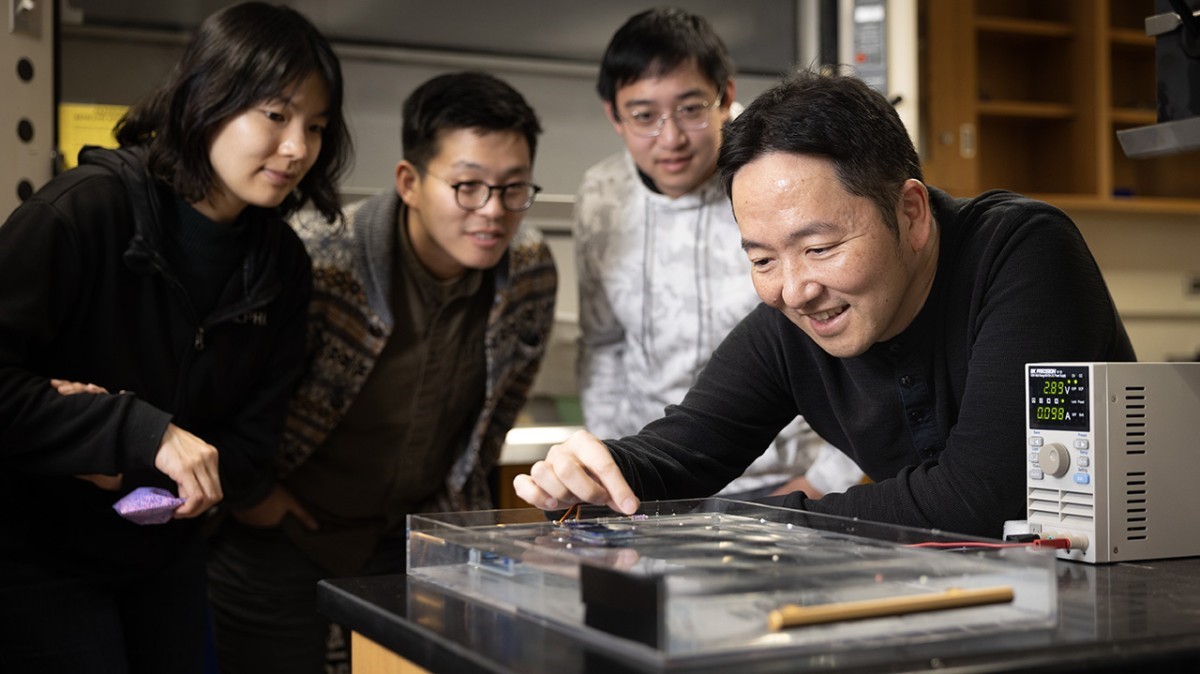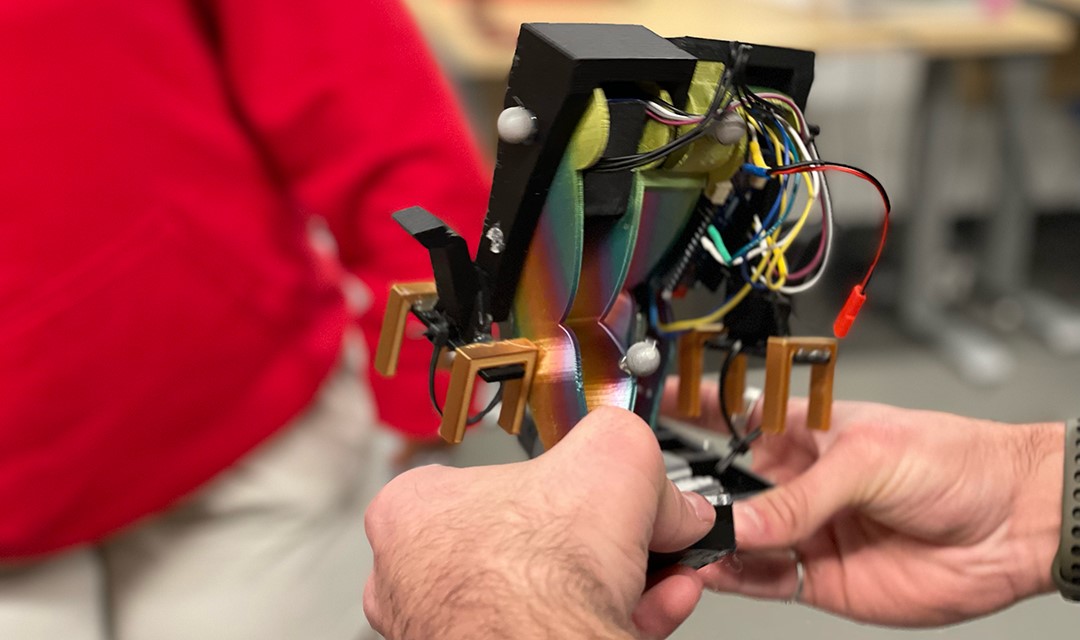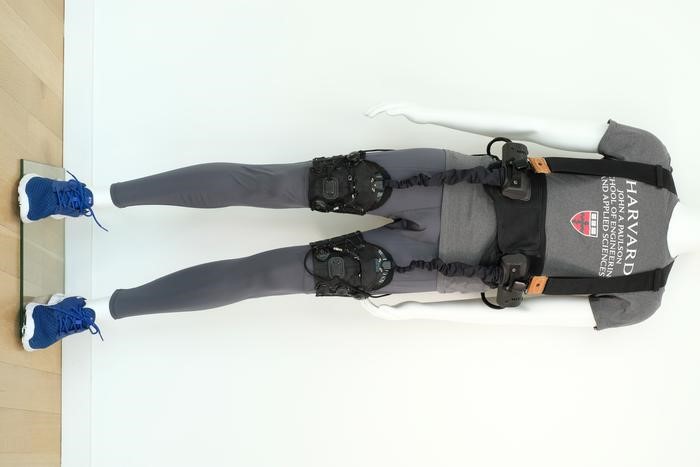ChromoSense: A Colorful Breakthrough in Robotic Sensing Technology
In the dynamic realm of robotics, researchers at the Reconfigurable Robotics Lab (RRL) in EPFL’s School of Engineering, led by Jamie Paik, have unveiled an innovative sensor known as ChromoSense. Unlike traditional sensors that often struggle to perceive multiple stimuli simultaneously, this groundbreaking technology combines color and flexibility to sense bending, stretching, compression, and temperature changes.
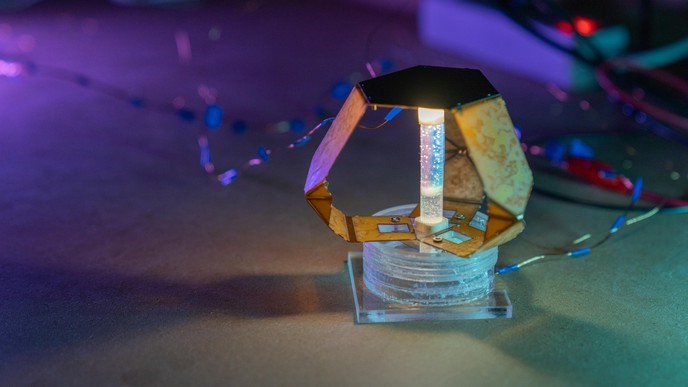
Figure 1. ChromoSense. (Credit: Titouan Veuillet/Adrian Alberola Campailla)
Figure 1 shows ChromoSense. The ChromoSense system features a translucent rubber cylinder divided into three sections dyed in red, green, and blue. An LED positioned at the device's top emits light through its core, while changes in the light's path through the colored sections, induced by bending or stretching, are captured by a miniaturized spectral meter at the bottom.
To enhance its capabilities, the sensor incorporates a thermosensitive section utilizing a special dye, similar to those found in color-changing t-shirts or mood rings. This section desaturates in color when heated, allowing ChromoSense to detect temperature changes. Published in Nature Communications and featured on the Editor's Highlights page, this research marks a significant leap in robotic sensory technology.
Paik explains that ChromoSense's streamlined approach offers a more efficient alternative to wearables. Unlike systems relying on cameras or multiple sensors, ChromoSense is lighter, less cumbersome, and requires minimal data processing. This makes it particularly suitable for applications in assistive technologies like mobility-aiding exosuits and everyday items such as athletic gear or clothing.
The simplicity of ChromoSense's mechanical structure and its use of color over cameras open the door to cost-effective mass production. Paik envisions widespread applications and sees potential in embedding the sensor into various materials for different tasks.
While the ability to sense multiple stimuli simultaneously is a strength, researchers are actively addressing challenges related to decoupling these stimuli. Currently focusing on improving the technology to sense locally applied forces or the precise boundaries of changing shapes, Paik believes that enhancing the information density of the sensor could be a fascinating future challenge.
Looking ahead, Paik plans to experiment with different formats for ChromoSense. Initially designed as a cylindrical shape and part of a wearable soft exosuit, the sensor could also be adapted into a flat form, aligning with the RRL's signature origami robots. As Paik succinctly puts it, "With our technology, anything can become a sensor as long as light can pass through it."
Source: Ecole Polytechnique Fédérale de Lausanne
Cite this article:
Hana M (2023), ChromoSense: A Colorful Breakthrough in Robotic Sensing Technology, AnaTechMaz, pp. 10



